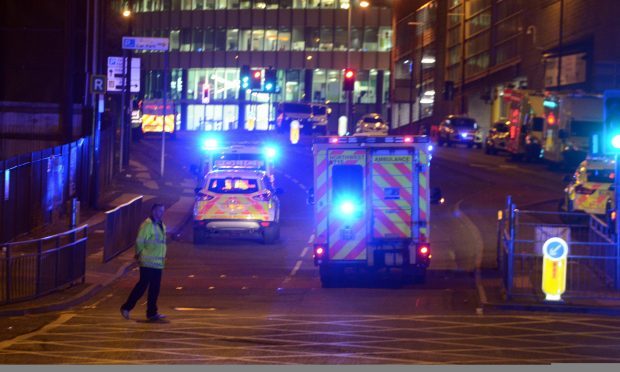Leading psychiatrists have advised parents not to hide the news of the Manchester terror attack from their children.
The Royal College of Psychiatrists said it is best to be honest with youngsters about the incident.
Parents should take into consideration the “age and sensitivity” of their child and let them lead the conversation, the College said.
Youngsters should also be assured of the rarity of such attacks.
Dr Bernadka Dubicka, chairwoman-elect of the child and adolescent psychiatry faculty at the Royal College of Psychiatrists, said: “It is normal to feel upset after Monday night’s tragic attack.
“Such terrible events instil fear and sadness within all of us.
“We would not advise hiding your child from what may be on the news or social media. They will inevitably learn about it from their friends, so it’s best to be honest with them about what has happened.
“While taking into consideration the age and sensitivity of your child, let them lead the conversation. Respond to their questions or concerns, and help them to understand that although what has happened is awful, these events are extremely rare.
“Do not try to force conversations with your child about this, but be there for them should they wish to talk.
“Most children and young people will not show any long-term effects from these events. However, a small proportion, particularly those who have been more directly affected, may show symptoms of stress and trauma. For example, they may have problems sleeping, concentrating or may be more anxious.
“The Royal College of Psychiatrists offers information on our website for parents, carers and anyone who works with young people on dealing with traumatic stress. If parents are worried, they should contact their GP in the first instance.”
Consultant child and adolescent psychiatrist Dr Andrea Danese, who is also clinical senior lecturer at King’s College London, told the Press Association:
“It is difficult to say if this attack will hit youngsters worse because it was an attack on their peers.
“I imagine it will be very confusing and distressing for many young people seeing how these horrific attacks now have reached activities that are and should remain positive, enjoyable, and energising.
“Young people have huge resilience but should also know that it is OK to ask for help – even the Royal Family gave great examples of openness in recent weeks. We should not let stigma or ignorance about mental health take a toll.”
When asked what advice he would give to parents when discussing the attack with their children, Dr Danese added: “Parents can make clear that the attack is now over.
“It is generally helpful to stop children from looking at news or social media coverage because the repetition of the scene can be disturbing and confusing.
“Talk about emotions – parents can explain that it is normal to be sad and upset after such horrific events.
“Children should not be forced to talk about the attack if they do not want to.
However, parents should be open and supportive if their children ask questions or want to talk.
“Parents should provide honest and accurate information or answers to help their children make sense of what has happened and clarify any misunderstandings about the event.”
He added that parents can also help their children regain a sense of control over their lives by sticking to normal routines and daily activities.
